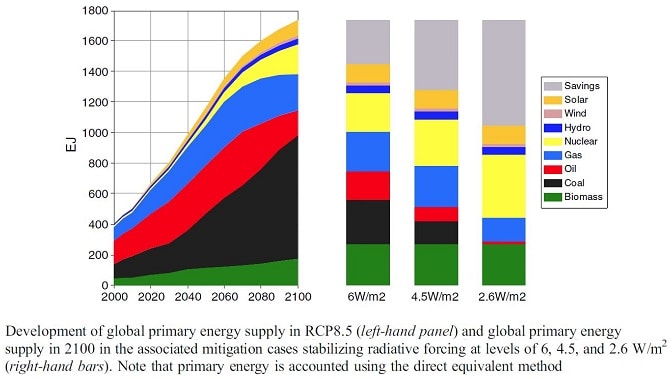Climate Study Urges Blacklisting of Contrarians


Authors of a study published recently in the journal Nature Communications want editors and journalists to blacklist “climate change contrarians.” Of course, the study doesn’t put it quite that way, but that clearly is the upshot.
The study, titled “Discrepancies in scientific authority and media visibility of climate change scientists and contrarians,” frets that although “expert scientists” beat “prominent skeptics” in “scientific authority” (number of publications and citations in the peer reviewed literature), skeptics beat scientists in the number of quotations and mentions in digital and print media. Skeptics’ media coverage is “disproportionate” not only to their numbers but also to their “scientific authority.”
Curing the alleged problem won’t be easy in the Internet age of decentralized information, the study acknowledges. Nonetheless, “professional journalists and editors” can and should “adjust the disproportionate attention given to contrarians.” Why? Because communicating “uniform” and “authoritative information about the risks of inaction is crucial for achieving global action” on climate change, and skeptics confuse the public by sowing doubt about climate risks.
Exactly who are those dastardly skeptics? A chart in the study names the top 100 “expert scientists” but purports to anonymize the top 100 contrarians “to foster privacy.” Nonsense. Supplementary material published along with the study includes a cloud-based link to a dataset naming all 386 contrarians in rank order of their media visibility. The implicit advice to editors and journalists is clear: Don’t publish or interview any of those people. Indeed, the authors advise, don’t even bother refuting skeptics, which just leaves “the counterproductive impression that there is something substantial in contrarian arguments to be debated.”
Call me old-fashioned, but a blanket refusal to debate skeptics is a dumb communications strategy. Imagine the following exchange.
Warmist: Climate change is an existential threat. The recent U.S. National Climate Assessment finds that unchecked climate change could increase global temperatures by 8°C and lop 10 percent off U.S. GDP in the 2090s.
Skeptic: Are you aware that the 8°C projection comes from climate models, called CMIP5, that on average project twice as much warming as has been observed in the lower atmosphere during the past 40 years? Also, do you know that in two dozen recent studies the average estimate of climate sensitivity (the amount of warming that results from a doubling of greenhouse gas concentrations) is about 40 percent lower than the average in the CMIP5 models?
Warmist: I’m not going to address that because doing so would only leave the impression there is something substantial in your argument to be debated.


Skeptic: Are you aware that the National Climate Assessment ran the overheated CMIP5 models with an inflated emissions scenario, called RCP8.5, which bizarrely assumes that coal scales up rapidly over the next 80 years to provide almost half of total global energy by 2100—a percentage not seen since 1940?
Warmist: I’m not going to address that because doing so would only leave the impression there is something substantial in your argument to be debated.


Skeptic: Do you know that even with that biased combo of overheated models and inflated emission scenario, the 8°C projection occurs in only 1 percent of model runs—a point not mentioned in the National Climate Assessment?
Warmist: I’m not going to address that because doing so would only leave the impression there is something substantial in your argument to be debated.
Skeptic: One last try. Do you know that even if warming implausibly hits 8°C and reduces U.S. GDP by 10 percent in the 2090s, the economy is still projected to be many times larger than it is today—another point not mentioned in the National Climate Assessment?
Warmist: I’m not going to address that because doing so would only leave the impression there is something substantial in your argument to be debated.
Time to restate the obvious. Ignoring an opponent in a public controversy does not refute him, refusing to debate only raises doubts about the refuser’s competence or honesty, and attempting to stamp out rather than win debates is the hallmark of authoritarian thugs.
The authors of the Nature Communications study are clueless. They apparently have no idea that when they demand uniformity of opinion in the name of science, they raise well-deserved doubts about their bona fides as non-partisan experts. They don’t see that increasingly shrill demands for “consensus” just fuel the skepticism they abhor.
The study’s central methodological flaw is stunning. It purports to compare the media coverage of “contrarians” and “scientists.” However, the contrarian list includes politicians (Sen. James Inhofe (R-OK), former Rep. Lamar Smith (R-TX), former Gov. Rick Perry (R-TX)), hosts of popular blogs (Mark Marano, Anthony Watts), journalists (Mark Steyn, James Delingpole), and best-selling authors (Matt Ridley, Chris Horner), among others who enjoy media access for reasons other than (or, in Mr. Watts’s case, in addition to) scientific research. In contrast, the “expert scientist” list includes only people who work in white lab coats.
Consequently, the study completely overlooks all the “consensus” science messages aggressively retailed and frequently embellished by the likes of Sen. Bernie Sanders (I-VT), Rep. Alexandria Ocasio-Cortez (D-NY), Leonardo DiCaprio, and countless other progressive politicians, environmental activists, mainstream media, Hollywood glitterati, rock stars, and other cultural icons. In other words, a full “life cycle” analysis of contrarian vs. scientific messaging would reveal no “disparity” or “disproportion” such as the study purports to quantify.
The study contends that the subset of 224 contrarian scientists who publish in peer-reviewed journals have disproportionate coverage in the mainstream media compared to the top 224 mainstream scientists who have many more publications and citations in the peer-reviewed literature. Some of this, the study concedes, may be due to a high number of negative media hits on skeptics.
I would offer two complementary explanations. First, the whole point of “consensus” climatology is to make all birds of a feather sing from the same IPCC and National Climate Assessment song books. That means each mainstream climate scientist sounds pretty much like any other. If asked, all will declare that the climate “crisis” is “worse than we thought.” After a while, that ceases to be interesting or even news. Journalists looking for something new must perforce occasionally talk to non-conformists.
Second, skeptics’ higher ratio of media hits per number of publications and citations in science journals is partly due to the anti-skeptic bias of both the federal agencies that award climate change research grants and the journals that publish climate studies.
Nearly all U.S. climate change research, which totals billions annually, is funded by federal agencies. For federal research and regulatory programs, perceptions of a “planetary emergency” are a source of prestige, power, and appropriations. Consequently, agencies have an organizational interest in funding researchers who affirm the narrative rather than question it.
Similarly, because university climate research programs heavily depend on federal funding, faculty chairs preferentially hire and promote researchers who toe the party line. Those same researchers supply most of the editors and peer reviewers of academic journals, who decide which papers to publish and which to reject.
In other words, a blacklist of sorts, although not as airtight as that desired by the Nature Communications study authors, already operates. There’s a con going on, which works like this. Step one: Make it harder to fund and publish skeptical research. That reduces not only the number of skeptical studies published but also the number of researchers willing to write anything critical of the “consensus.” Step two: Cite the lower publication rates of self-identified skeptics as evidence of low “scientific authority” when urging the public and the profession to ignore them.
In conclusion, the Nature Communications study may be the silliest ever in “climate communications” genre. The core premise of this literature is that America and the world would be far down the path of deep de-carbonization were it not for a “well-funded climate denial machine.” Hence, “experts” in this field continually search for “communication strategies” to pierce the veils of confusion and doubt.
Skeptics do punch above their weight and have helped foil unlawful schemes and wealth transfer scams promoted in the name of climate change. However, the chief impediments to “climate action” are factors more fundamental than the communications chops of climate skeptics. Those factors include the abysmal disproportion between the costs and benefits of so-called climate solutions, the amazing progress in human well-being during the age of global warming, and the healthy skepticism of ordinary people towards those who claim scientific status for coercive agendas of social transformation.
This blog post has been updated and expanded to include additional references and figures.